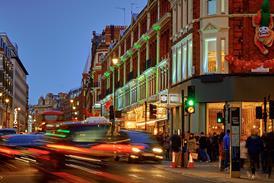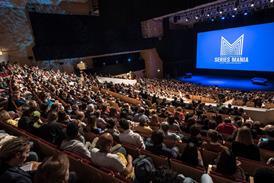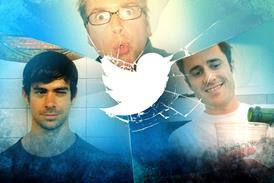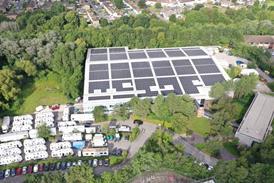Soho has always been at the centre of the post-production community, but as rents rise, the ‘edge’ softens and firms move out, can the area sustain its status as the creative heart of the industry?
If the square mile of the City is the financial head of London, then the patch of land bounded by Oxford Street to the north, Regent Street to the west and Charing Cross Road to the east is, without doubt, its creative heart.
Soho is a tangled, whispering warren of streets that has multiple identities: it is the historic centre of London’s sex trade, the gateway to the theatre district, a musical hub and the epicentre of the jazz, prog and punk scenes, nexus of gay London and, of course, the centre of the post-production and VFX industries.
Geographically, Soho lies with a slightly more fluid boundary to the south that is sometimes thought to encompass Chinatown, sometimes not, depending who you talk to. Its streets have echoed over the years to the footsteps of Soho runners, the minimum-wage aspirationals ferrying everything from film canisters and tapes to sushi and lattés through its patchwork of lanes.
The fact that those runners now carry more food and less media, as images are piped through the fibre that snakes deep beneath the pavements, means it’s not just the southern boundary that is wavering.
All boundaries are becoming porous as a newly footloose industry realises that the cheaper rents and rates that attracted it to the area in the first place now draw the eye to Fitzrovia, north of Oxford Street, Shoreditch and - whisper it - beyond the M25.
So, can the Soho post scene survive as postcode becomes less critical? Or will it gradually dissolve and bow out to cheaper areas of the city, ushering a new wave of tenants into its teeming buildings?
Soho’s association with the TV industry stretches back to its earliest days; indeed, a blue plaque on Frith Street marks the spot where, in 1926, John Logie Baird first demonstrated a working television set.
But Soho’s post-production roots lie in the years immediately after World War II, when an expanding US film industry was looking to enter the European market as the continent rebuilt.
Wanting an English-speaking base but baulking at the majority of London prices even then, it settled in Soho, where the rents and rates were cheap, transport links numerous, and the flourishing theatre district was nearby.
“If you wanted to be a cutting-room or promotions person, or a cameraman, and you wanted to be near those companies, you set yourself up in the equally cheap offices in and around Soho,” explains Prime Focus UK managing director Rowan Bray.
At this time, all media was physical - often heavy, extremely precious - and location was very much key. Media had to be moved between specialist companies servicing different parts of the film post process and moved quickly through London’s ever-developing gridlock.
In response, Soho agglomerated, added companies and services, and formed an at times uneasy and at times enthusiastic understanding with the seamier parts of its neighbourhood.
As The Farm joint chair Nicky Sargent says: “Creative people have always gravitated to Soho as we enjoy the mix of sleaze and glamour.”
In the early 1970s, when companies started to offer broadcast post on top of their established film and commercials services, the industry was firmly entrenched and not keen to move anywhere.
The resulting expansion in Soho gobbled up buildings and basements as technology changed the parameters of what it could do.
For Molinare founder Stefan Sargent, the “OMG breakthrough” came in 1976 with Ampex’s 1-inch helical tape recorder - so much so, he ordered three of the machines.
The arrival of Channel 4 in 1982 and the subsequent boom in the indie sector vastly increased the number of clients.
Back then, projects took time, too. “The longest edit I booked in was six weeks for a one-hour show,” says Bray.
“It was a Queen concert from Wembley, and we were asked to insure the rushes for £1m because that would have been the cost of restaging it with 10 cameras. In those days, there was much greater discipline [to editing]. Changing your mind meant you went down a generation and you couldn’t do that too many times without being unable to see the picture.”
Change is afoot
There is a consensus among those who have worked in Soho for a number of years that the area’s very nature has changed.
The phrase ‘business-like’ is used a lot, and ‘antiseptic’ is even mentioned. And the word ‘corporate’ crops up often - and not in a positive sense.
“Back in the ’90s, each and every morning, we sent our runner out to clear up the puke from the doorway or move on the person who had chosen our door to sleep in,” says Lesley Marr, chief operating officer at Deluxe.
“Our landlord was Raymond of Raymond’s Revue Bar fame and each year we had a rent fight. “I don’t think it has changed too much - it is perhaps cleaner with a lot more buzz, but probably less edgy now it is full of coffee shops and yearround tourists.”
Or, as The Farm co-chair Vikki Dunn puts it: “The streets and people are shinier but less awash with character.”
As companies such as Visions, 625, Dean St Post, SVC, TSI and Pepper slipped by the wayside, overall capacity was usually maintained through the emergence of new firms or the expansion of established facilities, in a constant churn that ensures industry pundits can justifiably talk about ‘over-supply in the sector’.
“There have been so many changes of ownership that The Farm, founded in 1998, has the longest stretch of the same ownership,” says Sargent.
“All other major Soho players have changed hands, even if the management has remained the same.”
Molinare chair Steve Milne says companies survive by adapting and changing, which in post is very capital intensive.“It is better to be boutique in customer service yet benefit from the economies of scale on virtually everything else.”
Soho Square stalwart The Farm is sticking firmly to its Soho roots, with the opening of a fifth, 20,000 sq ft site with 20 Avid suites, 10 audio studios, 10 finishing suites and two grading theatres on Marshall Street as Broadcast TECH went to press.
But rent and rate rises over recent years have seen companies that would be expected to be in Soho head north to Fitzrovia, as a combination of hedge funds willing to pay north of £120 per sq ft and Westminster Council rate rises and its ongoing mission to convert more office space into residential housing have put an increasing squeeze on property.
“Envy isn’t in Soho, and has proved it can work,” says Evolutions managing director Simon Kanjee, who moved Evolutions out of its Soho Square premises in 2011. “We’re north of Oxford Street ourselves now, and the acceptable area for a post-production company to live in has certainly broadened outside of Soho. But you still wouldn’t want to start something up on Bond Street, Piccadilly or Tottenham Court Road.”
The place to be
Clear Cut Pictures and BBC Studios and Post Production dipped their toes into central London waters with the opening of facilities in Fitzrovia: Clear Cut added to its west London base when it moved into Exposure Post’s former premises on Newman Street, while BBC S&PP’s exit from TVC involved opening a standalone facility in Editworks’ old office on Charlotte Street.
While there is an increased sense of geographic flexibility regarding where Soho starts and stops, there are limits, and both post firms are keen to play up their association with the central London post scene: BBC S&PP refers to its proximity to “London’s vibrant W1 post community”, while Clear Cut refers to its Newman Street office as being in Soho.
“It is extremely important for us to be in Charlotte Street, which is in the heart of London’s media production community,” says BBC S&PP post-production manager Steve Kruger.
“It enables us to offer full editing services close to where our clients work, while also having direct connectivity to our studios in Elstree.”
This is an example of the increasingly diverse approach to location that companies are taking. Indeed, Broadcast TECH knows of several high-profile Soho residents planning on opening satellites in other areas of the country in the very near future as a direct response to the BBC’s nations and regions policy, including Deluxe, which is looking at establishing a base in Manchester and Evolutions in Bristol.
And it’s not too far-fetched to imagine a future where the roles reverse and some of the larger players in the market maintain a shrunken Soho shopfront while expanding their operations elsewhere. After all, in a highly connected, cloud-based world, do post houses really need to be based in one tight grouping when it’s no longer necessary to lob tapes through the open windows of one building to another?
“No,” says Filmlight’s sales manager Arthur Johnsen. “But clients are still human and they are fond of Soho. They still like moving between different post houses for different services, or for their favourite creative.”
This opens another important area of debate: that Soho is as much about people as it is about place. Certainly, the costs of maintaining staffing levels are the main item on the balance sheet.
“London prices are London prices. I get pissed off with people moaning about rents, because it’s not that bad,” says Kanjee.
“The biggest cost is staff; that’s a far bigger overhead.”
Envy managing director Dave Cadle adds: “I still think you need to be in the square mile as that’s where all the talent is.”
Easy access
Many people point out that for all its faults - including the Cross- Rail project rumbling on beneath the streets - Soho is easy to get to from all of London’s main rail termini, and this makes it easy to tap into talent as well as drawing in business.
But even acknowledging the value of face-to-face contact, there are tensions between the old and the new workflows.
Martin Goodwin is a senior VFX artist at Rushes. He says: “The reality is there is nothing better than sitting with the editor during the cut, grade, VFX, or sound mix from a creative view. But that is not always possible in these busy days. If you have a good relationship with someone, you can do a lot remotely, but I also think people don’t have the time to sit in the suite all day any more.”
He has a point, but one of the things that has surprised urban geographers and economists the most over the past couple of decades is the inelasticity of face-to-face contact.
A few years ago, the smart money was on the rise of teleworking and flexible hours; the reality is that most people are reluctant to lose that contact.
Offline is expected to move to the cloud, though there are issues: “Cloud computing is nowhere near ready yet - certainly not at a price a post facility could charge a client,” says Halo chief executive John Rogerson.
But the rest of the service will probably stay exactly where it has always been. “I’m hoping that the clientattended suites will hang on in Soho - the human and personal creative collaboration is what’s made Soho unique and so strong, and it’s going to take time for remote working to be able to deliver the same success,” says ERA London sales manager Richard Hayter-Gare.
The consensus is that it will take time for any new media hubs to deliver the same success, whether they’re in London or further afield. They might have the talent, they certainly have the technology and the investment, but they do not have the history or the sense of place.
For all the concentration on the bottom line in modern broadcast post, that sense of connection still counts.
It’s about the coffee shop around the corner, the boutique across the square, that brilliant restaurant down the street, and it’s about the people sitting behind the desks and in front of the machines, who just happen to offer a world-class service.
“I think Soho will stand the test of time,” says Deluxe Europe managing director Chris Higgs. “There will be different names over the door, but there’s likely to still be a community of highly technical, highly creative businesses alongside some of the best bars in town - fingers crossed.”
Founding fathers
Companies from the early period include Molinare, SVC, Mike Mansfield, MPC and Carlton; people include David Jeffers, Barry Johnson, Mike Luckwell, Stefan Sargent and Barry Wiseman. There are many more, of course, but there is a definite sense that in the pre-corporate era, the post scene was small enough that it could be shaped by individuals, and, with Soho’s boundaries firmly delineated, these were some of the characters that built the industry inside it.
- This feature is taken from the June/July issue of Broadcast TECH. Click here for the digital edition






























No comments yet